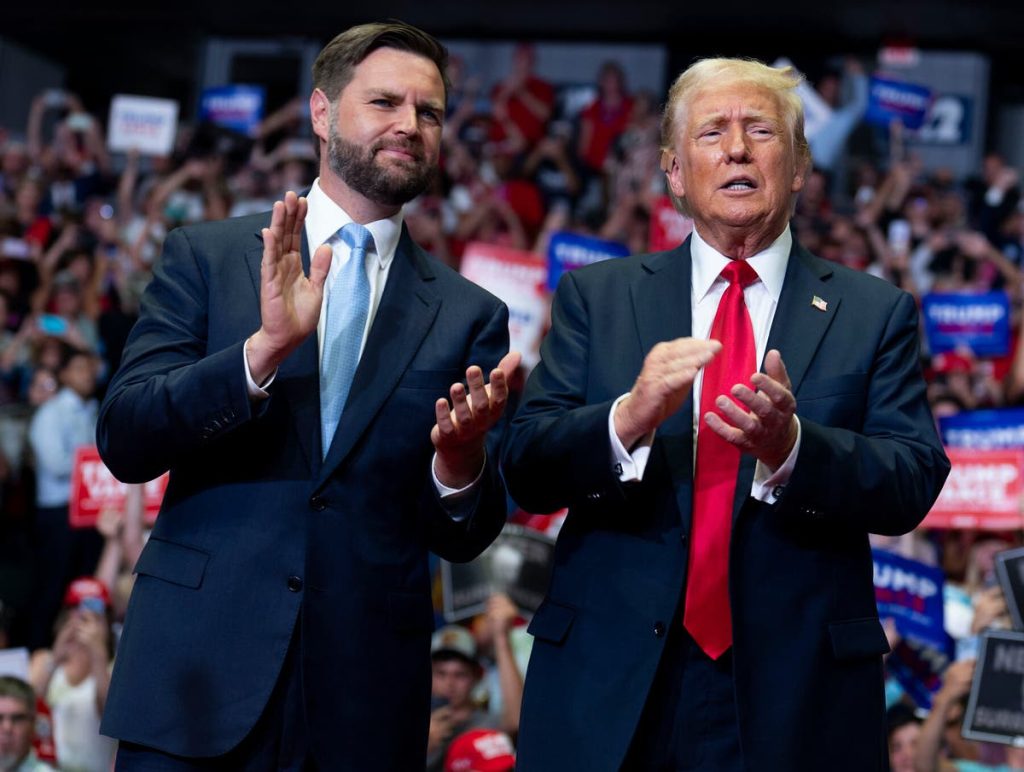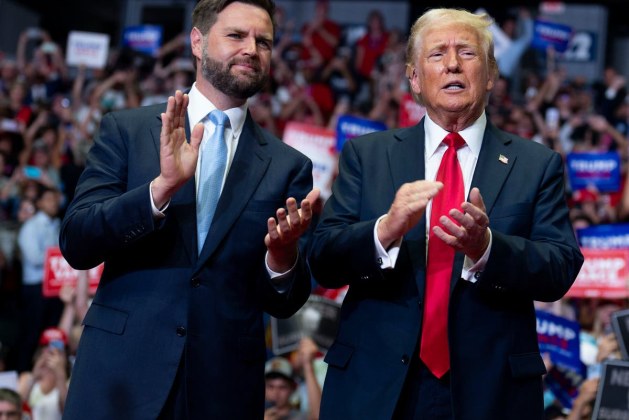Given the political chaos of the past month, the latest New York Times/Siena College survey stands out for its unique insights, with a notable exception being who’s leading the presidential race.
The survey indicated that Donald J. Trump was slightly ahead of Kamala Harris by one percentage point, with 48 percent of likely voters supporting him compared to 47 percent for Harris, the Times and Siena College’s survey of likely voters show. Beyond Harris’ name, the phrase “Trump +1” is a result that could have emerged in any poll prior to President Biden’s underwhelming debate.
However, upon examining each question, there are significant changes from past Times/Siena polls, all conducted before the vice presidential nominee, Kamala Harris, firmly secured her party’s nomination for the presidency, before the Republican convention, and the attempted assassination of Mr. Trump. The one-point lead by Harris suggests a notable turnaround for Democrats from Mr. Biden’s deficit of six points in our previous Times/Siena poll.
As I’ve noted, the occurrence of these events complicates the interpretation of recent poll results, including this one. While the survey can serve as an indicator of the current race’s position, it’s premature to assume that these positions will remain unchallenged once the turbulence subsides.
Although the general outcome between Ms. Harris and Mr. Trump might seem familiar, the survey is brimming with indications that there’s still a great deal of political dust in the atmosphere.
Mr. Trump garners a peak in popularity. All in all, 48 percent of registered voters express a positive opinion of him, rising from 42 percent in our previous survey (which was taken after the debate yet before the convention and the assassination plot). This represents his highest positive score in a Times/Siena study, which historically has seen his approval ratings range from 39 to 45 percent.
Ms. Harris’s popularity is on the rise. In fact, her approval figures have climbed even further than Mr. Trump’s. Now, 46 percent of registered voters hold a positive opinion of her, up from 36 percent when we last inquired about her in February. Meanwhile, just 49 percent view her unfavorably, a decrease from 54 percent in our prior assessment. It’s also noteworthy that her approval rating is now above Mr. Biden’s. In essence, her standing is now higher than any previous Times/Siena polls have recorded since September 2022, which marks the last period when Mr. Biden led a Times/Siena survey of registered voters.
The national political climate seems to have improved slightly. The percentage of voters who believe the nation is moving in the right direction has increased to 27 percent — though not a joyous or optimistic populace, this is the highest it’s been since the midterms of 2022. Similarly, approval and positive ratings for Mr. Biden have also gone up. The number of voters who harbor negative opinions of both Ms. Harris and Mr. Trump has significantly decreased: With both Ms. Harris and Mr. Trump at the top of their polls, the figure of voters who dislike both candidates has fallen to 8 percent, compared to 20 percent in the earlier Times/Siena polls this year.

Given the fundamental shifts in opinions towards the candidates, there’s no logical explanation to believe that the consistent +1 outcome for Trump is simply a return to the position before the debate. Currently, these changes have mostly negated each other, but the future remains uncertain.
According to the standard narrative, Trump’s rise in the past month looks a lot like a traditional “convention bounce,” possibly enhanced by his survival of the assassination plot. Past bounces often diminish, though not always completely.
What’s happened to Harris in the last week doesn’t match up with any textbook scenario. It’s likely she’ll continue to enjoy the benefits of her fresh candidacy, though her future is unpredictable. Only time will reveal how the public will perceive her, as they listen to her and face criticism in the days and weeks to come.
Below are some highlights from our survey.
Yes, it looks like voters are okay with the Democratic overhaul.
It seems the Times/Siena survey hasn’t reported finding 87 percent agreement among voters on any issue, but that’s the percentage claiming support for Mr. Biden’s decision to step back from the presidential race, with just 9 percent against.
Democrats, on the other hand, are all in on Kamala. More than four-fifths believe she should run, while just 14 percent think someone else should be the nominee. A bit over a quarter (27 percent) believe a competitive nomination process is a good idea, but a solid majority (70 percent) think the party should back her up quickly and make her the nominee.
A common demographic split
If you’re an avid reader of Tilt, you’re aware we’ve been monitoring Mr. Biden’s weak appeal among young, Black, Hispanic, and voters with low voting rates for nearly a year.
It’ll take some time — likely more than a month due to possible changes ahead — before we fully understand the demographic makeup of this new campaign. However, in this particular survey, the contrast between the Harris-Trump debate looks more traditional and familiar.
In this survey, Ms. Harris did better among young adults (18 to 29) and Hispanics compared to any other survey this year. She also did better among those who haven’t voted than Mr. Biden in every other Times/Siena survey over the same time frame. On the flip side, she did worse among white working-class voters and those over 65 compared to Mr. Biden in every but one of the previous Times/Siena polls.
However, it’s important to note that this is just one poll; the outcomes of individual groups from a single survey can be volatile and have a large margin of error. Nonetheless, there’s a strong indication that these demographic changes are meaningful. The results align with those of prior Times/Siena surveys, and generally, they suggest a pattern similar to the anticipated strengths of a Black woman (who also has Indian heritage) in her 50s from California compared to a white man in his 80s from Scranton, Pa.
Will Kennedy aid Ms. Harris?
Ms. Harris actually tied with Mr. Trump when the minor-party candidates including the independent Robert F. Kennedy Jr. were considered along with the independents.
She reached 44 percent support from voters, Mr. Trump’s also at 44 percent (Ms. Harris’s lead fell to zero at 43.5 to 43.2), with Mr. Kennedy at 5 percent. This is Mr. Kennedy’s lowest number since we’ve started featuring him in our polls.
Mr. Trump secured the lead in both one-on-one and among many candidates due to his victory over Mr. Kennedy’s minor support by a margin greater than two to one. While the sample size is modest, this is Mr. Trump’s most significant lead among those who support Mr. Kennedy according to our recent surveys.
This survey is just a snapshot, yet it hints that having Mr. Kennedy in the race could more directly benefit Ms. Harris. Historically, Mr. Kennedy’s campaign has leaned more towards conservative voters. For example, in this survey, while he’s positively rated among Republicans, he’s negatively received by Democrats. Yet, he was attracting a roughly equal amount of support from President Biden and Mr. Trump, especially among younger voters who are typically Democrats but are unhappy with Mr. Biden.
On the other hand, Ms. Harris might not face the same issue. If she’s able to attract young, disgruntled Democrats who usually vote Democratic, Mr. Kennedy might not be able to pull them away as much from her, potentially leading to a shift in support towards Mr. Trump.





[…] Read Article: Significant Changes Hidden Under the Surface in a New Trump-Harris Survey […]